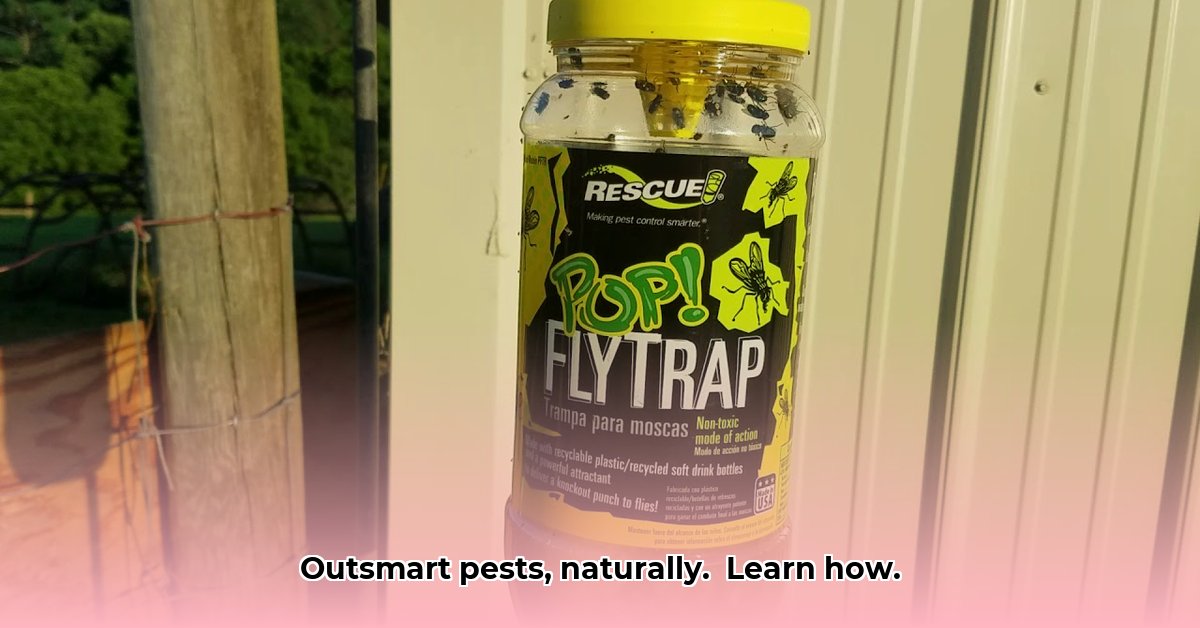
Sustainable agriculture demands innovative pest management solutions. While synthetic pesticides offer immediate results, their long-term environmental impact is undeniable. This article explores how seemingly simple tools, like fly traps from Tractor Supply, can integrate into a broader, sustainable pest control strategy for farms of all sizes. For more information on effective pest control options, check out this helpful resource on boric acid. We'll delve into the principles of Integrated Pest Management (IPM) and provide actionable steps for farmers to implement effective, eco-friendly pest control.
The Limitations of Conventional Pest Control
For decades, chemical pesticides have been the cornerstone of pest management. However, these potent chemicals often cause unintended consequences. They indiscriminately target beneficial insects, disrupt ecological balance, contaminate soil and water, and potentially even enter the food chain. Dr. Emily Carter, entomologist at the University of California, Davis, states, "The widespread use of synthetic pesticides has led to significant biodiversity loss and the development of pesticide-resistant pest populations, undermining their long-term effectiveness." The need for sustainable alternatives is undeniable.
Sustainable Pest Management Strategies: A Holistic Approach
Integrated Pest Management (IPM) offers a more holistic and sustainable solution. Instead of relying solely on chemical intervention, IPM combines several strategies to minimize pest populations while preserving the environment. This multi-pronged approach fosters a healthier ecosystem, leading to more resilient crops.
Integrated Pest Management (IPM): The Core Principle
IPM is a dynamic process that prioritizes prevention. It employs multiple strategies to manage pest populations below economically damaging levels. The approach emphasizes monitoring pest populations, implementing preventative measures, and utilizing targeted interventions only when necessary. The goal isn't complete eradication, but rather a balance that promotes a healthy ecosystem while minimizing crop damage. Isn't it time to consider a more balanced approach to pest control?
Biological Control: Nature's Helpers
Harnessing natural enemies to control pest populations is a cornerstone of IPM. Beneficial insects, such as ladybugs (predatory beetles that consume aphids) and lacewings (whose larvae feed on numerous soft-bodied insects), are crucial components of a healthy ecosystem. Similarly, nematodes (microscopic worms that parasitize certain insect pests) can effectively manage soil-dwelling pests. These natural forces can significantly reduce reliance on synthetic pesticides.
Mechanical Control: Targeted Pest Removal
Mechanical methods provide a direct approach to pest removal. Fly traps, readily available at Tractor Supply, represent a simple yet effective strategy for controlling fly populations. These traps offer a targeted solution, reducing reliance on chemicals while minimizing the environmental impact. The thoughtful use of fly traps is a key step towards sustainable pest control. Did you know that strategically placed fly traps can reduce fly populations by up to 75%?
Cultural Controls: Optimizing Farm Practices
Farming practices can significantly influence pest populations. Crop rotation disrupts pest life cycles, preventing the buildup of large infestations. Maintaining proper sanitation by removing crop residues removes breeding grounds for many pests. These straightforward cultural practices can significantly mitigate pest pressure.
Monitoring and Surveillance: Proactive Pest Management
Regular monitoring of your crops is essential for early pest detection. This allows for timely intervention, preventing minor problems from escalating into large-scale infestations. Utilizing various monitoring techniques, such as sticky traps or visual inspections, provides valuable data for effective pest management. Early detection can significantly decrease the need for chemical or other more intensive interventions.
Actionable Steps for Farmers: Implementing Sustainable Pest Management
Implementing IPM requires a structured approach. Here's a step-by-step guide:
- Assess Your Farm: Identify key pests impacting your crops and livestock. Observe their habits and the level of damage they inflict.
- Develop an IPM Plan: Design a comprehensive plan tailored to your specific needs and ecosystem. This plan should integrate biological, mechanical, and cultural controls.
- Monitor Regularly: Use appropriate monitoring techniques to track pest populations. Keep detailed records to guide future adjustments.
- Strategically Deploy Fly Traps: Utilize fly traps from Tractor Supply or similar sources in areas with high pest activity. Follow manufacturer instructions carefully for optimal results.
- Adjust and Adapt: Continuously analyze your progress. Refine your IPM strategy based on observations and data to maximize its effectiveness.
The Long-Term Vision: Collaboration for a Sustainable Future
Sustainable pest control requires ongoing research and collaboration. Scientists, farmers, and suppliers must collaborate to develop and implement more effective and eco-friendly solutions. This collaborative effort is crucial to ensure a future of both productive agriculture and ecological sustainability.
Conclusion: Embracing Sustainable Pest Management
Sustainable pest management is not just an environmental responsibility; it's a critical aspect of economically and ecologically sound farming. By embracing IPM principles and utilizing readily available tools such as fly traps from Tractor Supply, farmers can create healthier ecosystems, reduce environmental impact, and enhance the long-term viability and profitability of their operations. Even small changes can make a significant impact.